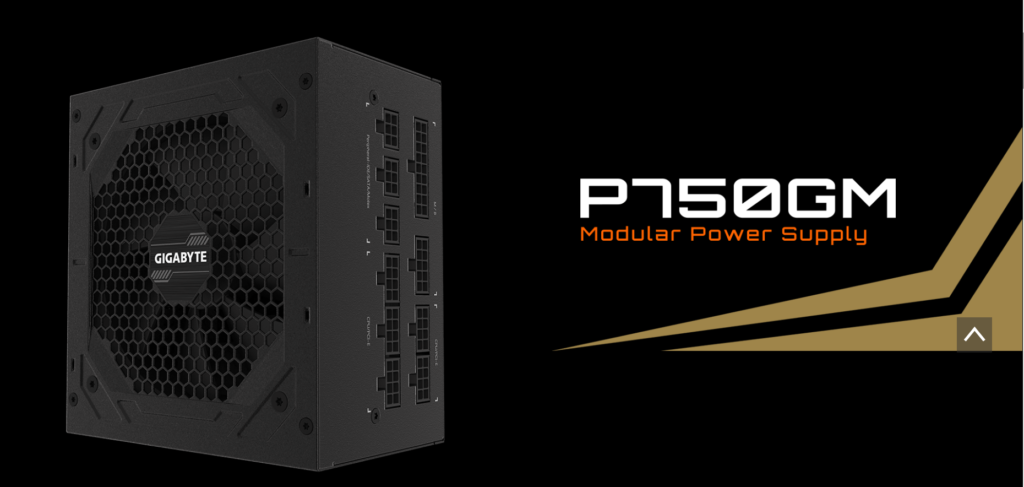GIGABYTE P750GM
Today, GIGABYTE (GIGA-BYTE Technology Co., Ltd) is up for a trip through our power supply testing program. As a company, GIGABYTE has a longer history than many other companies in the enthusiast DIY realm having been founded in 1986. While GIGABYTE’s primary focus has been motherboards and graphics cards, it has branched out into laptop/tablet design, PC design, chassis, and even a few power supplies.
The early power supplies in these lines were not something we saw much of but, hopefully, going forward we will see more and more from GIGABYTE in this realm. Today, we are looking at our first GIGABYTE branded power supply the GIGABYTE P750GM (GP-P750GM).
Xiamen Metrotec Electronic Industry Co., Ltd. (MEIC) was founded a few short years ago in 2007. To date, their products have been almost exclusively in the power adapter realm and not the SMPS realm let alone the enthusiast power supply realm. Obviously, this makes them currently only a minor power supply OEM that is not nearly as well known to users as some other OEMs as its core business focus has been outside of the desktop market. However, with GIGABYTE picking MEIC up as their contract manufacturer, perhaps we will start to see more of them in the future.

Does It Take A GIGABYTE Out Of The Competition?
The GIGABYTE P750GM is the first power supply we have seen from GIGABYTE here at TheFPSReview. This particular unit is going to be a bit more interesting outing for many people than 1200W+ monsters as it is a more mainstream product in model/capacity/price range. As this product is coming to us at a reasonable market position from GIGABYTE, we have fairly reasonable expectations when it comes to performance and value. That said, it is also going to face a lot of competition in this kind of product segment so things will not be easy for the P750GM today. However, before we get too far ahead of ourselves, let’s first see what GIGABYTE has to say about this unit:
FULLY MODULAR DESIGN
All the black flat cables are modular design. Installing only the cables you need to reduce clutter, to increase the airflow and to improve the chassis thermal performance.
80 PLUS GOLD CERTIFIED
80 Plus Gold certified ensures to deliver 90% efficiency at 50% load. The better power efficiency leads to less power waste, less heat and less fan noise. And with the support of Intel processors, it will save more energy and more money.
HIGH QUALITY JAPANESE CAPACITORS
The main capacitors are high quality Japanese capacitors, to produce the efficient performance and to ensure the longer reliability.
20MM SMART HYDRAULIC BEARING (HYB) FAN
The fan speed is adjusted according to the automatic power detection and will stop when the system is idle or under low load (less than 20% load). The Hydraulic Bearing fan provides longer and more stable life time.
SINGLE +12V RAIL
Single +12V rail provides the best power output, stability and compatibility for the hardware. It provides the easiest way to install the power cable. And it is the best design for overclocking.
PROTECTION
In order to make sure the entire computer system to operate stably under any conditions, we not only added protection designs such as OCP, OTP, OVP, OPP, UVP and SCP, but also ensured the stable operation of your system through the safety certification of various countries.
DIMENSIONS
Compact size to fit any small chassis.
Let’s move on now and see what we can expect when a user purchases the GIGABYTE P750GM power supply in retail in terms of documentation, accessories, cable count, rail layout, output characteristics, and general build quality.
